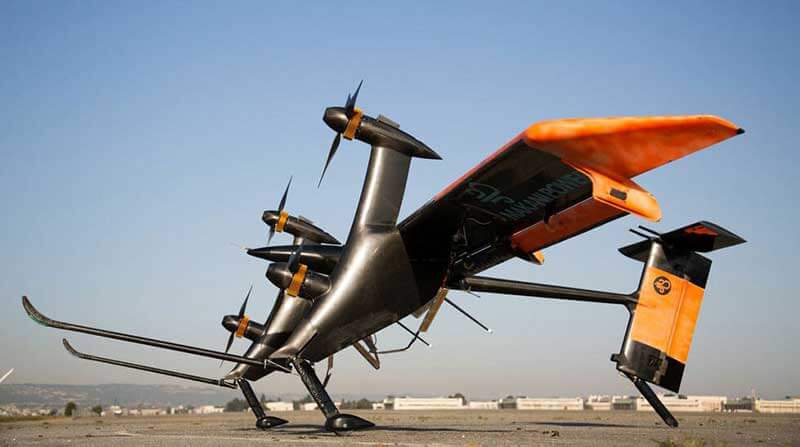- Google X’s Makani wind kite takes wind energy to greater heights
- Windstalk bladeless wind power generators sway in the wind
- The Wind harvester generates power even at low wind speeds
- The Dutch take century-old windmill designs and throw them into the future
- Mitsubishi Heavy Invests in Buoyant Airborne Turbine
- Italian designers turn old viaducts into futuristic wind turbine bridges
Wind energy is one of the cleanest and most promising renewable energy sources of the future and one that best competes with fossil fuel power. In some parts of the world, wind generated energy is already as cheap as coal. This doesn’t mean that the future will see our views obstructed by enormous, unsightly wind turbines. A lot of the wind energy developments are focused on offshore plants, where power generation is much more efficient than on land, and new wind energy concepts are designed every day, from bladeless wind power generators and wind wheels to Google X’s flying kites. Turbines are even built into existing structures like old viaducts or integrated in apartment buildings or on top of skyscrapers. In the future, we may all have small, personalised wind turbines in our backyards to power our homes, enabling us to go off the grid. With wind energy, the possibilities are virtually endless. Here are six inspiring examples.
1.Google X’s Makani wind kite takes wind energy to greater heights
Google recently became a subsidiary under its new parent company Alphabet, resulting in many of Google X’s semi-secret advanced tech projects now being managed separately. One of these projects is the energy kite, an airborne device made by Makani Power. The energy kite is not your average wind turbine. It’s a system that resembles a plane with rotors – that flies around like a kite. The lightweight kite flies at high altitudes where it can harness steadier, stronger winds. The wind kite consists of the kite itself, a computer system with GPS and other advanced tech, a ground station and a tether. Once the kite is airborne, its rotors become the turbines that power the onboard generator. Via the tether, the harvested wind energy is then sent down to a grid. Compared to traditional wind turbines, the Makani wind kite generates 50 percent more energy and uses 90 percent less materials. Because its ground station is much smaller than that of a turbine tower, the Makani wind kite is also very suitable for small-scale use. The initial wind kites were approximately 8.5 metres long, but the new generation models are 25.5 metres with more rotors, enabling them to generate more energy.

2. Windstalk bladeless wind power generators
Windstalk, devised by New York design firm Atelier DNA, is a wind-powered electricity generator concept that also functions as a public space and tourist attraction for Masdar City in Abu Dhabi. Inspired by the way wheat or reeds sway in the wind, the Windstalk project consists of over a thousand, 55-metre high carbon-fibre stalks with a diameter of up to 20 metres, anchored to the ground. LED lights in the top of the stalks glow or dim, depending on the intensity with which they sway. Within each hollow stalk, piezoelectric ceramic discs are stacked on top of each other, with electrodes in between each disc. Cables, reaching from the top to the bottom of each stalk, connect every other electrode. One cable connects the even electrodes while another connects the odd ones. When the stalks sway in the wind, the discs are compressed and the electrodes generate current. The concept was awarded the second prize in the Land Art Generator Initiative in which entrants were asked to design a land/environmental art installation uniquely combining artistic concept and clean energy generation.
3. The Wind harvester generates power even at low wind speeds
The Wind Harvester is the brainchild of Derbyshire inventor Heath Evdemon, founder of Wind Power Innovations Ltd. His horizontal wind turbine does not loom high over the landscape, is virtually silent and can operate in various wind conditions at only half a metre above the ground. The Wind Harvester, supported by the Nottingham Trent University’s Future Factory sustainable design project, can be placed atop buildings, on hills and in any other location where the installation of traditional wind turbine farms would be a challenge. Blades initially measure one metre, but the Wind Harvester can be expanded to accommodate blades of 15 metres, making the system suitable for domestic as well as commercial use. Evdemon’s invention is based on reciprocating motion. This means that when a horizontal airfoil is caught by the wind and reaches a certain height, the angle of the blade changes, forcing it downward, after which the process repeats itself. This reciprocating motion as well as the points on the airfoils moving at the same speed, enables the Wind Harvester to generate electricity even at low wind speeds.
4. The Dutch take century-old windmill designs and throw them into the future
The Dutch have been building windmills for hundreds of years and they are now using that tradition to build the ‘Windwheel’ in the city of Rotterdam. The structure is an initiative of the Windwheel Corporation and designed by South African Duzal Doepel, partner at DoepelStrijkers architects. The 174-metre high Windwheel is a circular steel-and-glass structure incorporating rotating cabins, apartments, a hotel and a restaurant, all boasting the latest tech such as glass cabin facades with interactive layers of information. Built on an underground foundation surrounded by wetlands, the Windwheel structure appears to be floating. Apart from the striking appearance, the Windwheel’s most impressive part is the inner ring’s silent, bladeless Electrostatic Wind turbine that contains a framework of horizontal tubes spraying positively charged water droplets into the air. When the wind blows these particles back against the electric field, a negative charge is created. The Windwheel also makes use of passive solar design, photovoltaic-thermal modules, rainwater collection and waste-to-biogas conversion. This exciting yet complex project is set for completion in 2025.
5. Mitsubishi Heavy Invests in Buoyant Airborne Turbine
Mitsubishi Heavy Industries and the Suhail Bahwan Group have recently invested in the development of airborne wind turbines made by US company Altaeros Energies Inc. The BAT, or Buoyant Airborne Turbine, is best described as a helium-filled balloon with airship tech lifting a wind turbine. It makes use of customised, tethered aerostat technology that has traditionally been used to lift monitoring and communication equipment to high altitudes. The airborne turbine harnesses wind at around 600 m above the ground, where wind speeds are faster and have up to eight times more power density. The BAT is used to supply remote and off-grid households with power, replacing the expensive to install and operate diesel generators that are standard in remote areas. Not only does the blip supply power, it can also provide telecommunications and Internet. The first model will provide sufficient energy to power a community of around 15 homes.
6. Italian designers turn old viaducts into futuristic wind turbine bridges
If the Italian government would have to demolish all the abandoned viaducts and bridges in the south of Italy, it would cost them around $50 million. In order to kill a few birds with one stone, a contest called ‘Solar Park South’ was organised, in which engineers and designers were encouraged to come up with ideas on how to repurpose these old structures in sustainable ways. Tall bridges located in mountainous areas are particularly suitable for generating wind power, because that’s where crosswinds originate. Second place in the competition was taken by Luisa Saracino, Giovanna Saracino and Francesco Colarossi. The design team created the ‘Solar Wind’ concept – a bridge with 26 wind turbines of various sizes built in between its pillars, capable of producing 36 million kilowatt hours of electricity per year. The surface of the bridge would be covered with solar cells, producing a further 11.2 million kilowatt hours of power. This energy combined would be sufficient to power 15.000 households. Additionally, the designers included a promenade and park area on top of the viaduct with solar-powered greenhouses along the sides to grow fresh produce for sale to travellers crossing the viaduct.
According to the Global Wind Energy Council and Greenpeace International, wind power is estimated to reach 2,000 GW by 2030, supplying up to 20% of global electricity, creating over 2 million new jobs and reducing CO2 emissions by more than 3 billion tonnes annually. By 2050, wind power is forecast to provide 30% of global electricity supply. Major technological developments enabling the commercialisation of wind energy have already taken place, and while many concepts still need to be further developed, funded and prototyped, wind energy is set to become one of the most cost effective sources of power in the world.




